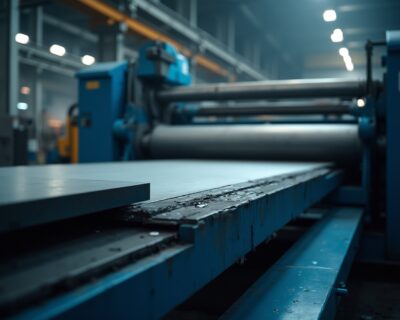Blog

Detailed Analysis of C 2000 Alloy: Composition and Applications
Introduction
In the realm of advanced materials, Hastelloy C-2000 stands as a paragon of innovation and durability. This high-performance nickel-chromium-molybdenum alloy is meticulously engineered to withstand extreme environments, offering exceptional resistance to pitting, stress corrosion cracking, and oxidation. Its unique composition, featuring substantial amounts of chromium and molybdenum, along with elements like tungsten and iron, makes it indispensable in industries where reliability under harsh conditions is non-negotiable.
From aerospace to chemical processing, the alloy’s ability to maintain structural integrity and mechanical strength at elevated temperatures underscores its critical role in modern industrial applications. This article delves into the composition, key alloying elements, mechanical properties, corrosion resistance, and real-world applications of Hastelloy C-2000, providing a comprehensive understanding of why this material is a preferred choice for demanding environments.
Composition of Hastelloy C-2000 Alloy
Hastelloy C-2000 is a high-performance nickel-chromium-molybdenum material, renowned for its exceptional ability to withstand pitting, stress corrosion cracking, and oxidation. Comprising approximately 20% chromium and 5% molybdenum, with a balanced nickel content, it also includes elements like tungsten and iron to enhance its robustness. This careful selection of components ensures the mixture’s durability in extreme environments, particularly in chemical processing. For instance, the addition of chromium significantly contributes to its corrosion resistance, forming a passive film that protects the alloy. Tungsten’s presence further enhances its strength, making this alloy ideal for high-temperature applications. This level of performance makes it indispensable in industries like aerospace, where materials must withstand harsh conditions without compromising structural integrity.
Key Alloying Elements and Their Roles
The alloying elements in Hastelloy C-2000 each contribute uniquely to its superior properties. Chromium, for example, plays a vital role in oxidation protection, forming a stable and protective thin coating that prevents degradation. Molybdenum improves the mixture’s ability to withstand pitting and crevice corrosion, which is crucial for preserving integrity in severe conditions. Nickel, as the base metal, imparts ductility and toughness, ensuring the material can withstand mechanical stresses. Additionally, tungsten is incorporated to further enhance corrosion durability, particularly in reducing environments. This combination of elements creates a synergistic effect, significantly boosting the alloy’s durability and performance. The importance of such high-performance materials is underscored by their application in extreme environments, such as in aerospace and nuclear power industries, where maintaining strength and resistance to corrosion under extreme conditions is critical.

Mechanical Properties of Hastelloy C-2000 Alloy
Hastelloy C-2000 stands out due to its remarkable mechanical properties, including a high tensile strength and excellent ductility. This metal mixture retains its robustness even at elevated temperatures, making it ideal for challenging applications. It possesses a commendable yield strength and elongation, ensuring it can endure significant mechanical stresses without failure.
The distinctive mixture of metals, which includes elements like molybdenum and chromium, contributes to its strength and flexibility. These elements enhance its resistance to corrosion and oxidation, which is particularly beneficial in extreme environments. For instance, research has shown that alloys with similar high-purity compositions maintain high strength and desirable physical properties at temperatures ranging from 293K to 1523K.
Furthermore, the capability of this alloy to preserve its characteristics across a broad temperature spectrum is essential for sectors functioning in severe environments, such as aerospace and chemical production. This makes it a preferred choice where both durability and adaptability are paramount.
In essence, this alloy’s combination of strength, ductility, and temperature stability makes it an exceptional material for demanding industrial applications.
Corrosion Resistance of Hastelloy C-2000 Alloy
Hastelloy C-2000’s standout feature is its unparalleled corrosion resistance. This metal excels in resisting a variety of corrosive substances, including sulfuric acid, hydrochloric acid, and chlorides. Its performance excels in both reducing and oxidizing environments, surpassing many other materials. This is largely due to its unique composition, which includes 15 to 17.5 percent chromium, 3 to 5 percent nickel, and 3 to 5 percent copper, according to Adam Augustyn. This robust resistance makes it ideal for aggressive chemical processes, ensuring both longevity and reliability. The material’s capability to withstand severe tool corrosion, as seen in processes involving HCl during wet oxidation, further underscores its reliability. As highlighted by recent breakthroughs in corrosion science, understanding these interfaces can lead to more accurate and efficient designs.
Applications of Hastelloy C-2000 Alloy
This alloy is a fundamental material in various high-demand sectors such as chemical processing, oil and gas, and power generation. This metal’s exceptional resistance to corrosion and high temperatures makes it indispensable for critical equipment, including reactors, heat exchangers, and piping systems. Its versatility allows it to function effectively in both batch and continuous processing setups, meeting a wide array of operational requirements.
Real-world applications underscore its importance. For example, companies specializing in thermal processing have increasingly adopted Hastelloy C-2000 for its ability to handle challenging materials with high viscosity or fouling potential, ensuring efficient heat transfer. Since the COVID-19 pandemic, demand for comprehensive thermal processing systems has surged, with sales increasing by over 60% in 2022. This trend highlights the mixture’s reliability and adaptability in diverse scenarios, from food and drink production to wastewater treatment and anaerobic digestion.
Furthermore, the alloy’s resilience under harsh conditions is evident in projects like the Hazer Group’s Commercial Demonstration Plant, which successfully produced hydrogen and graphite. The alloy’s role in such innovative applications highlights its essential importance in advanced industrial processes, reinforcing its reputation as a favored material for challenging environments.

Comparison with Other Hastelloy Alloys
This alloy distinguishes itself through a remarkable balance of corrosion resistance and mechanical strength. Unlike Hastelloy C-276, which excels primarily in reducing environments, this alloy performs exceptionally well in both reducing and oxidizing conditions, making it highly versatile. This alloy’s enhanced fabrication characteristics further extend its applicability in various manufacturing processes. This comparative analysis underscores C-2000’s versatility across a broad spectrum of industrial applications, standing as a testament to its robust performance under diverse conditions.

Conclusion
Hastelloy C-2000 emerges as a leading choice in advanced materials due to its exceptional composition, mechanical properties, and corrosion resistance. The alloy’s unique blend of nickel, chromium, and molybdenum, supplemented by tungsten and iron, provides a formidable defense against pitting, stress corrosion cracking, and oxidation. This composition not only enhances its durability in extreme environments but also ensures that it maintains structural integrity and mechanical strength, particularly in high-temperature applications.
The alloy’s mechanical properties, including high tensile strength and excellent ductility, make it suitable for demanding industrial applications. Its ability to withstand significant mechanical stresses while retaining flexibility is crucial for industries such as aerospace and chemical processing. Furthermore, the remarkable corrosion resistance of Hastelloy C-2000 enables it to thrive in aggressive chemical environments, effectively handling a variety of corrosive media without compromising performance.
Real-world applications further illustrate the alloy’s indispensable role in critical sectors. From chemical processing to power generation and innovative projects like hydrogen production, Hastelloy C-2000 continues to demonstrate reliability and adaptability. Its versatility, especially when compared to other Hastelloy alloys, solidifies its position as a preferred material in demanding environments, catering to the needs of modern industries that prioritize performance and durability.
In summary, the strategic selection of Hastelloy C-2000 represents a critical investment for industries facing the challenges of extreme conditions.




